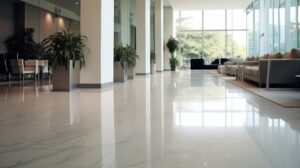
Residential painting involves transforming private living spaces, such as homes and condos. It’s about meeting the needs of homeowners and embracing their aesthetic preferences.
This article will discuss the benefits of residential painting and the reasons to hire professional contractors. There are many different techniques used for this type of project.
Aesthetics
A fresh coat of paint can transform the look and feel of a space. It can bring out the best in your furniture, highlight craftsmanship in cabinetry, and imbue rooms with personality. But it’s also about more than just aesthetics; a repaint can protect the structure and boost property value.
Professional residential painting focuses on the interior and exterior of single-family homes, townhomes, condos, and other living spaces. It is different from commercial painting, which focuses on offices, retail stores, hotels, and restaurants. The goals of each are very different and require special skills, tools, and techniques.
Residential painting is done in private living spaces, which are often more intimate than business environments. As such, it is important for professionals to focus on attention to detail and the homeowner’s comfort. This includes using low-VOC paints to improve indoor air quality and reduce the risk of allergies. It is also important to understand the psychological effects of color and how they can affect a room’s occupants.
The right colors can help increase productivity, focus, and energy levels. For example, neutral tones can promote a calming atmosphere that fosters concentration. Meanwhile, vibrant shades can encourage creativity and energize the space. The right colors can also create a cohesive branding message in commercial spaces, promoting consistency with brand identity.
Unlike commercial projects, which are often completed after hours, residential painting is usually done during the weekday and requires the use of specialized equipment. This can create disruptions to the workflow of homeowners, which is why project management and scheduling are key factors for successful completion. Keeping up with the latest industry trends, including design and color forecasts, can also help residential painting professionals improve their work.
Whether it’s the exterior of your house or the quaint kitchen in your apartment, residential painting is a vital aspect of home maintenance. It can protect the structure and enhance the overall curb appeal of your residence. However, it also offers a host of other advantages, from boosting your resale value to improving your family’s well-being. Choosing the right colors and working with experienced professionals can help you achieve a unique aesthetic that’s both functional and appealing.
Durability
Residential painting is a specialized field that involves the beautification of living spaces. Its scope includes interior and exterior walls, ceilings, garages, porches, patios and more. Residential painters work directly with homeowners, catering to their wants and needs. They are experts at helping them select the right colors and finishes for their home’s unique aesthetics, comfort and personality.
Durability is a primary focus of a residential paint job, as well as protecting surfaces from the weather and wear-and-tear. Quality residential paints are water-based, which means they release fewer volatile organic compounds (VOCs) into the air than oil-based alternatives. This is good news for the health and safety of the occupants.
In addition to offering a more environmentally-friendly finish, water-based paints also offer better flexibility than their oil-based counterparts. In many cases, this translates to easier maintenance and repair. It also allows the homeowner to touch up a surface in a fraction of the time it would take them to do so with an oil-based product.
Aside from the durability of the paints themselves, the skills and knowledge of the residential painters are also important factors when it comes to making a project successful. This is because a house is a very personal space. The homeowner’s family members, guests and visitors will be interacting with the freshly painted areas of the house regularly. Keeping this in mind, it’s important for the painters to treat the project with respect and complete all of their tasks in a way that will not disturb or inconvenience any family members.
While there are some similarities between residential and commercial painting, it’s important to understand the differences. Residential painting projects typically involve the interior or exterior of a single-family home, townhouse, condominium or apartment building. Commercial painting, on the other hand, involves businesses and other non-residential structures.
Aside from a difference in job size, commercial painting jobs often have more stringent timelines than residential ones. This is because businesses must be able to resume operations as quickly as possible. For this reason, commercial painting contractors usually employ larger teams of painters than residential contractors.
Safety
Residential painting is a labor-intensive project that requires the use of a variety of tools and materials. Some of these substances are hazardous and require special handling techniques, as well as proper waste disposal. Failure to do so can result in fines or other problems for your building.
Additionally, painting can be physically taxing and can put strain on your back if you are not using proper posture. Having a professional painter handle the bulk of this work can help prevent injury and ensure that your project is completed within the allotted time frame.
Surface Protection
In addition to its aesthetic benefits, painting also protects surfaces from moisture, dust and other contaminants. Repainting your home’s exterior can prevent wood rot, insect infestations and other damage, saving you money in maintenance costs.
Personalization
Residential painting gives homeowners the opportunity to tailor their living spaces to match their style and personality. This can create a more comfortable, inviting atmosphere that is in line with the homeowner’s lifestyle and taste.
Curb Appeal
A fresh coat of paint can make your house stand out among the neighborhood and increase its resale value. It is important to choose the right colors and finishes, however, in order to achieve the desired effect. It is also essential to properly prep the surface and apply the paint in a way that will ensure lasting results.
Safety
Safety is a top priority for both commercial and residential painters. Quality contractors have safety protocols in place that are continually reviewed and updated. Commercial painters deal with larger environments and carry greater risk than residential painters, so they need to be especially careful in their approach.
It is important to always keep your hands away from electrical outlets during painting projects, and to avoid working in areas where electrical wires run. You should also wear a face mask when handling any paints or solvents that could be harmful to your health. Having adequate ventilation is also key, as breathing in fumes can be dangerous or even life-threatening. Leaving the windows open will allow air to circulate and minimize the spread of toxic fumes.
Value
Homeowners invest in residential painting to increase the value of their properties. The right paint colors and proper surface preparation can make a dramatic difference in the overall appearance of a residence, adding curb appeal and boosting resale value. In addition, a well-executed home painting project can also improve indoor comfort and reduce maintenance costs.
Residential painters focus their efforts on painting the interior and exterior of single-family homes. They work directly with homeowners and understand their specific needs. They can also assist them in choosing the best paints and color options for their projects.
Compared to commercial painting, residential projects are usually smaller in scope and require less material. However, the amount of paint used plays a big role in the cost of both types of projects. High-quality paints provide better coverage and may be more expensive than low-quality paints. This can add up quickly, especially if the job requires multiple coats.
Another way that residential painting differs from commercial projects is in the type of equipment and materials needed. Commercial painters often use specialized tools and paints that are designed for different types of surfaces. In addition, they need to have extensive experience working on large buildings. Residential painters, on the other hand, work with standard paints and equipment that can be found at any home improvement store.
Residential painters are often self-employed contractors who own their own business. They typically work during the week and take weekends off to enjoy time with their families. They can also choose to work on a flexible schedule that meets the needs of their clients. In contrast, many commercial painters must adhere to strict deadlines and schedules.
While both commercial and residential painters can apply paint to any surface, there are many differences between the two types of projects. Residential painters focus on small projects and work with individuals to meet their individual needs. They can help you select the perfect paints and colors for your home, and they will ensure that your furniture and flooring are protected during the painting process. They can also work with you to ensure that your schedule and budget are met.

